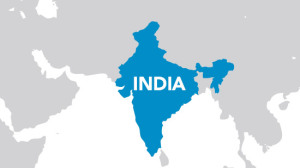India Moves to Stabilize Their Cotton Market
Cotton Corporation of India (CCI) sold 1,100 bales on the first day of auction, creating international curiosity in the past two days.
According to an official notification, CCI initiated electronic auction on January 27 to sell an initial quantity of 5,100 bales (170 Kgs each) at a price higher than the market price from its Adilabad, Warangal and Guntur offices.
The general manager of a leading cotton spinning mill in South India provided some insight into the current market situation within the country.
 Indian spinners and cotton merchants are looking for price stability, he said. The excess cotton production in India, coupled with the recent China import policy, has created enormous price instability, compared to last year.
Indian spinners and cotton merchants are looking for price stability, he said. The excess cotton production in India, coupled with the recent China import policy, has created enormous price instability, compared to last year.
While the current market price in India is below what the CCI is selling since January 27 and its earlier procurement cost, the move by CCI to release cotton from its stock should help stabilize the cotton price this season. The source believes that CCI would have initiated the initial sell, not only to generate liquidity for its additional procurement, but also to ensure higher prices to the farmers when the Indian market price is trading low.
India’s production for this cotton season is estimated to be 40 million bales (170 Kgs each), which is higher than last year’s production. From November 2014 to January 2015, 70 percent of the cotton crop – particularly in rain-fed areas – would have arrived, showing that India is on track to have a bumper crop. Last year, India exported a good quantity of its production to China. So far this year, China has not imported Indian cotton, leading to stock piling and a decline in market price in India.
The price decline, which is not favorable to either producers or spinners, should have prompted CCI to initiate its first phase of selling for this season. The MCU-5 variety (30 mm length), which is suited for fine counts, was selling at a spot price of about Rs. 32,500 ($529.40) per candy (356 Kgs) on January 27, when CCI announced its auction. Subsequently, the spot price of this variety has shown some increase to Rs. 34,000 ($553.83) per candy in the Warangal market. Last year, the price went as high as Rs. 48,000 ($781.88) per candy.
Furthermore, the current cotton price is not suitable for spinners, as it leads to lower yarn prices at a time when the costs for labor and utilities are increasing in India. Currently, a 60s Ne cotton yarn sells for Rs. 250 ($4.07) per kilogram, while the price that is sustainable for the Indian spinning industry is around Rs. 275 ($4.47) per kilogram. Around the same period last year, 60s Ne cotton yarn was about Rs. 295 ($4.80) per kilogram.
Additionally, the source suggests that oil prices – currently trading in mid-$40 per barrel range – would put pressure on the polyester industry to reduce its price, further aggravating the situation in the cotton industry. Indian polyester price is expected to further go down to Rs. 80 ($1.30) per kilogram sometime next week, while this price was Rs. 110 ($1.79) per kilogram last year.
This volatility in polyester price will also influence the global cotton price.
From the Indian spinning industry point of view, this latest move by CCI to dispose of 5,100 bales should help soften the volatility and allow spinners to realize adequate value for the yarns. However, the current policy adopted by CCI to sell its cotton is also not well received, as it stipulates the minimum amount of deposit money needed to book cotton as approximately 15 to 20 percent of the total cotton value.
Gaining price stability and an upward tilt in the cotton price are needed for the economic viability of the Indian spinning sector.
Conversion rate used: $1 = 61.39 Rupees









